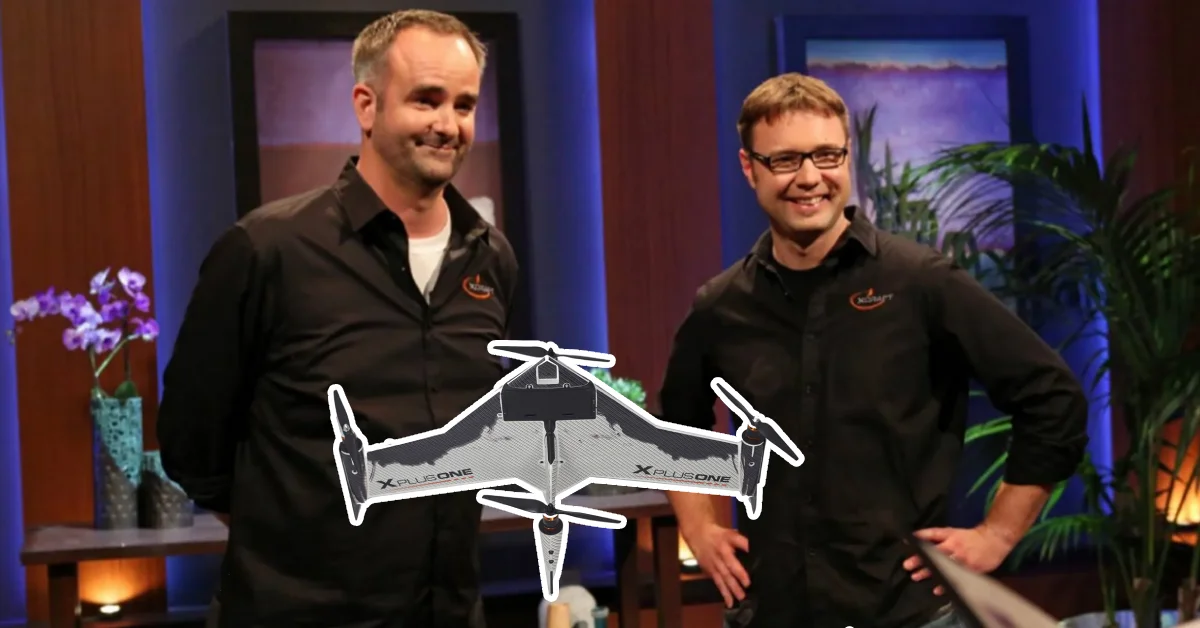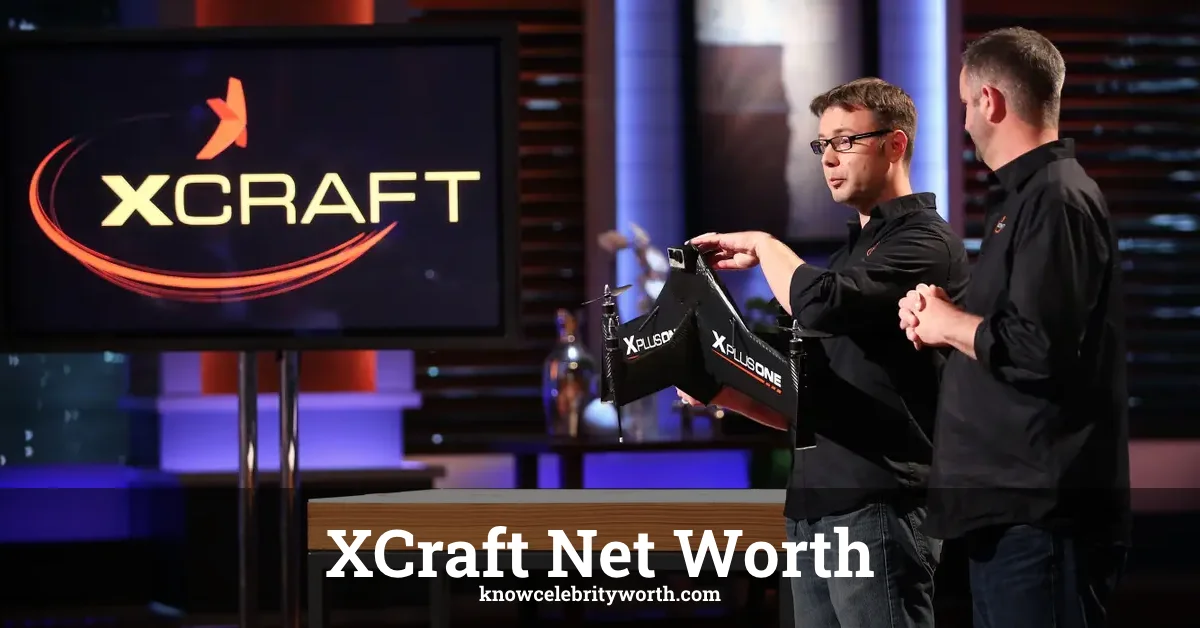Drone technology keeps growing, and xCraft stands out as one of the most talked-about companies in this space. Many people want to know about xCraft net worth, especially after their famous Shark Tank appearance.
This article digs into their finances, ownership, and market position to give you a clear picture of what this drone company is really worth in 2025.
Company Overview
xCraft started in 2014 when JD Claridge and Charles Manning joined forces to create innovative drone technology. Based in Coeur d’Alene, Idaho, the company quickly made a name for itself with its unique hybrid drone designs that combine the benefits of multirotor and fixed-wing aircraft.
Their flagship products include the Phone Drone, which turns smartphones into flying cameras, and the X PlusOne, a drone that can take off vertically like a quadcopter but then fly horizontally like an airplane. This versatility gives their drones better range and flight time than many competitors.
The company’s mission focuses on making high-performance drones accessible to both consumers and businesses. Their approach to drone design sets them apart in a crowded market, helping them secure their place in the growing drone industry.
From 2014 to now, xCraft has grown from a small startup to a recognized name in drone technology. Their timeline shows steady growth through product launches, funding rounds, and strategic partnerships.
Who owns xCraft?
JD Claridge serves as the CEO and co-founder of xCraft. His background in aerospace engineering gives the company solid technical leadership. Charles Manning, the other co-founder, brings business and software expertise to the table.
The ownership structure changed significantly after their 2015 Shark Tank appearance. In an unusual move, all five Sharks (Mark Cuban, Kevin O’Leary, Daymond John, Lori Greiner, and Robert Herjavec) joined together to invest $1.5 million for a 25% stake in the company.
Other private investors have come on board in subsequent funding rounds, though the exact breakdown of current ownership percentages isn’t publicly disclosed. The founders still maintain significant control of the company, with the Shark Tank investors holding their original equity positions.
Key Milestones
xCraft’s journey has several important moments that shaped both their business growth and total worth:
- 2014: Founded by JD Claridge and Charles Manning in Idaho.
- 2015: Appeared on Shark Tank Season 7, securing a $1.5 million investment from all five Sharks for 25% equity, valuing the company at $6 million.
- 2016: Successfully delivered their Kickstarter-backed Phone Drone product to backers.
- 2018: Expanded into military and defense contracts, significantly increasing their market reach.
- 2020: Launched enterprise-focused drone platforms, opening new revenue streams beyond consumer products.
- 2022: Secured additional funding for expansion, though the exact amount remains private.
- 2024: Released their most advanced drone model yet, pushing their valuation higher.
Each of these steps helped build xCraft’s market position and increase their total worth over time.
Revenue Streams

Understanding xCraft net worth requires looking at where they make money. The company has diversified its income sources:
1. Product Sales
Their consumer drones like the Phone Drone and X PlusOne generate direct revenue. These products range from $500 to $5,000 depending on features and capabilities. This remains their most visible revenue stream.
2. Government Contracts
Since expanding into military applications, xCraft has secured several defense contracts. These typically have higher profit margins than consumer sales and provide more stable long-term income.
3. Enterprise Solutions
They offer custom drone platforms for businesses in agriculture, construction, and security. These solutions include both hardware and software components with ongoing support agreements that create recurring revenue.
4. Licensing Technology
xCraft has developed patents for their hybrid drone technology that they license to other manufacturers, creating passive income without production costs.
5. Software and Services
Beyond hardware, they offer drone management software, training programs, and maintenance services that add to their bottom line.
This mix of revenue sources gives xCraft financial stability and multiple paths for growth, contributing positively to their overall net worth.
Profitability Analysis
When examining xCraft net worth, we need to look at profitability, not just revenue. The company reached profitability in 2019, about five years after founding – faster than many tech startups.
Their gross margin (the percentage of revenue remaining after direct production costs) sits around 55-60% for hardware products. This is higher than the industry average of 40-45% for drone manufacturers, showing their efficient production processes.
The net margin (profit after all expenses) hovers between 12-15% in recent years. This compares favorably to the broader consumer electronics industry where net margins often fall below 10%.
xCraft’s breakeven point – the sales volume needed to cover all costs – has decreased over time as they’ve scaled production and optimized operations. Initially, they needed to sell about 1,000 units annually to break even, but now that number is lower thanks to their diversified income streams.
Their path to profitability wasn’t always smooth. Early years saw the typical startup losses as they invested heavily in research and development. The Shark Tank investment provided crucial working capital that helped them reach profitability sooner than they might have otherwise.
Market Comparison
To put xCraft net worth in context, let’s compare them to similar companies in the drone space:
1. DJI
The market leader with an estimated valuation of $15 billion and annual revenue exceeding $2 billion. DJI commands about 70% of the consumer drone market.
2. Skydio
This autonomous drone maker reached a valuation of $1 billion in 2021 after raising $170 million in funding. Their focus on AI-powered flight gives them a different market position than xCraft.
3. Parrot
This publicly-traded French drone company has a market cap around $200 million with annual revenue of approximately $80 million, focusing on both consumer and commercial applications.
Compared to these competitors, xCraft occupies a middle-market position. They don’t match DJI’s massive scale but have established a stronger market presence than many smaller drone startups that have come and gone.
Industry analysts estimate xCraft’s annual revenue between $15-20 million, putting them in the upper-middle tier of drone manufacturers. Their focus on hybrid drone technology gives them a specific niche that helps maintain healthy margins despite competition.
Legal & Controversies
Like many companies in emerging tech fields, xCraft has faced some legal and business challenges that affected their valuation.
In 2019, they were involved in a patent dispute with a competitor over certain aspects of their hybrid drone design. The case was settled out of court, but legal expenses temporarily impacted their profitability.
Some early Kickstarter backers expressed frustration over delivery delays with the original Phone Drone. While xCraft eventually fulfilled all orders, the situation created some negative publicity that the company had to overcome.
On the positive side, they’ve avoided major product recalls or safety incidents that have plagued some drone manufacturers. Their solid safety record helps maintain customer trust and protects them from potential liability issues that could harm their net worth.
These legal matters highlight the importance of looking beyond simple revenue figures when assessing xCraft net worth. How a company handles challenges often reveals more about their long-term stability than periods of uninterrupted growth.
Contrary to some online rumors, xCraft drones haven’t disappeared from the market. The company continues to produce and develop new models. The confusion may stem from their pivot toward enterprise and military applications, making their products less visible to average consumers.
Their consumer-focused Phone Drone did see limited production after the initial Kickstarter run, as the company shifted resources toward more profitable market segments. This strategic decision likely improved their financial position even if it reduced their visibility in the consumer space.
The X PlusOne and their newer enterprise models remain active products, though with more targeted marketing to specific industries rather than broad consumer campaigns. This focused approach has helped them build deeper relationships with key clients while avoiding the marketing costs of competing directly with consumer drone giants.
xCraft Net Worth Today
Based on all available information, xCraft’s current net worth in 2025 falls between $25-30 million. This valuation reflects their annual revenue, profit margins, asset holdings, and market position.
The Shark Tank deal in 2015 valued the company at $6 million, meaning they’ve seen roughly a 400% increase in valuation over about a decade. This growth rate outpaces many small businesses but falls short of the explosive growth seen in some tech startups that reach “unicorn” status.
Several factors support this valuation estimate:
- Their steady revenue growth, reaching an estimated $15-20 million annually.
- Healthy profit margins compared to industry averages.
- Valuable patent holdings that provide both competitive advantages and licensing income.
- Strategic positioning in both consumer and enterprise/military markets.
For comparison, if they were to pursue acquisition, similar drone companies have sold for 1.5-2.5 times annual revenue, which would put xCraft’s acquisition value in a similar range to the net worth estimate above.
It’s worth noting that private company valuations involve some uncertainty since they don’t have the clear market price that public companies do through their stock value. The figures here represent the best estimate based on publicly available information and industry benchmarks.
For those wondering about xCraft stock – the company remains privately held, meaning there are no public shares available for ordinary investors to purchase. Their stock exists only as private equity held by the founders, the Shark Tank investors, and other private backers.
Looking forward, xCraft’s revenue prospects appear positive. The global drone market continues to expand, with particular growth in enterprise and military applications – areas where xCraft has strengthened its position.
Industry analysts project the commercial drone market to grow at 15-20% annually over the next five years. If xCraft can maintain their current market share, this growth rate suggests their revenue could reach $30-35 million by 2030, potentially pushing their net worth past the $50 million mark.
However, they face challenges including increasing competition, potential regulatory changes affecting drone usage, and the ongoing need for R&D investment to stay technologically relevant.
Conclusion
xCraft net worth stands at approximately $25-30 million in 2025, representing significant growth from their $6 million valuation during their Shark Tank appearance. This growth stems from their innovative hybrid drone technology, diversified revenue streams, and strategic focus on high-margin market segments.
Unlike many startups that struggle to find profitability, xCraft has built a sustainable business model combining product sales, government contracts, enterprise solutions, and technology licensing. Their path shows how a technology startup can grow steadily without necessarily chasing the “unicorn” trajectory that dominates tech headlines.
For those interested in the drone industry and startup valuations, xCraft offers a fascinating case study of building company worth through focused innovation and strategic market positioning. The company’s journey from a Shark Tank pitch to a multimillion-dollar enterprise demonstrates the potential of finding specific niches within broader technology trends.
Want to learn more about drone company valuations and success stories? Check out our other articles on technology startup growth and valuation metrics.
